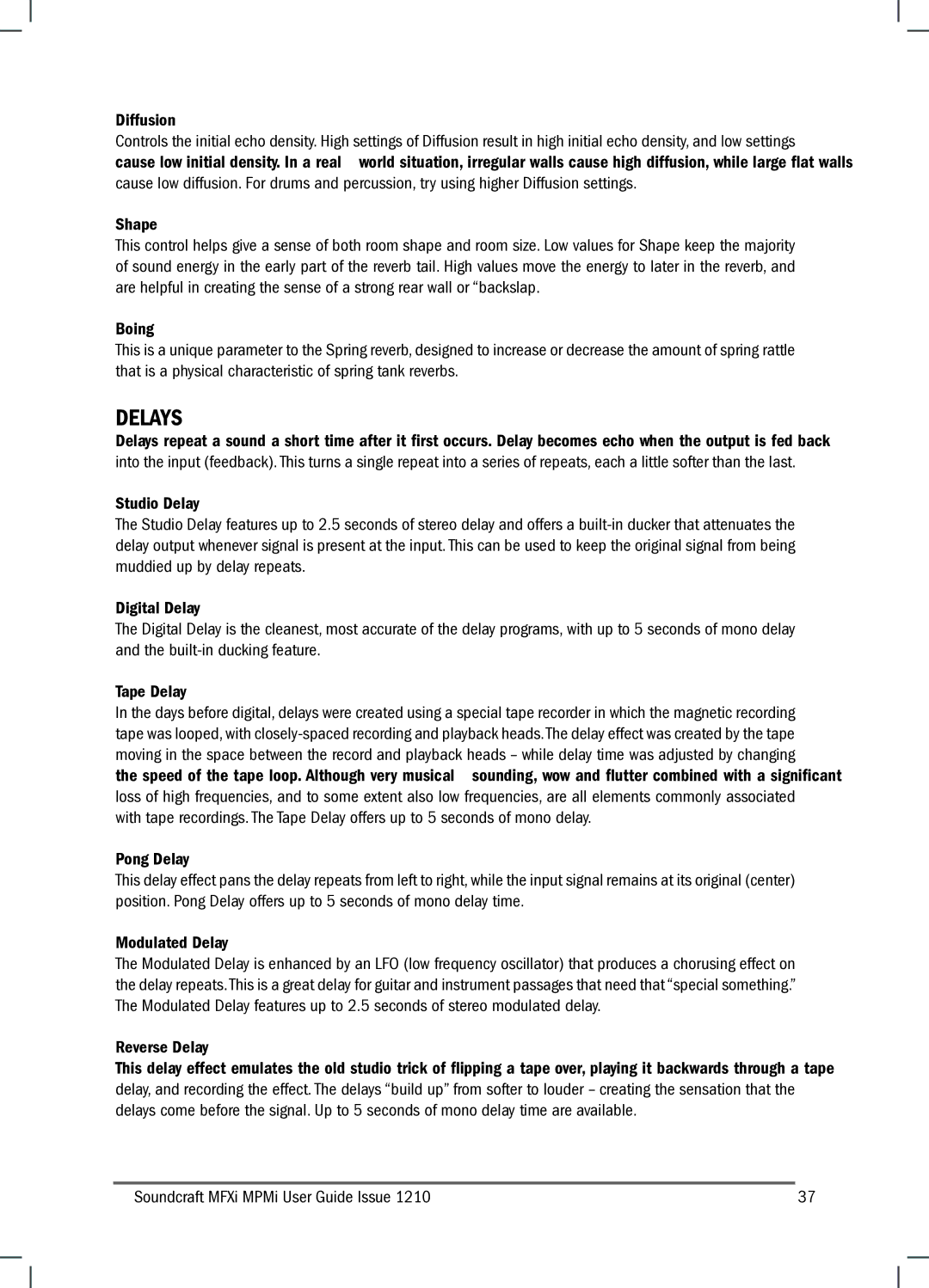
Diffusion
Controls the initial echo density. High settings of Diffusion result in high initial echo density, and low settings cause low initial density. In a
Shape
This control helps give a sense of both room shape and room size. Low values for Shape keep the majority of sound energy in the early part of the reverb tail. High values move the energy to later in the reverb, and are helpful in creating the sense of a strong rear wall or “backslap.
Boing
This is a unique parameter to the Spring reverb, designed to increase or decrease the amount of spring rattle that is a physical characteristic of spring tank reverbs.
DELAYS
Delays repeat a sound a short time after it first occurs. Delay becomes echo when the output is fed back into the input (feedback). This turns a single repeat into a series of repeats, each a little softer than the last.
Studio Delay
The Studio Delay features up to 2.5 seconds of stereo delay and offers a
Digital Delay
The Digital Delay is the cleanest, most accurate of the delay programs, with up to 5 seconds of mono delay and the
Tape Delay
In the days before digital, delays were created using a special tape recorder in which the magnetic recording tape was looped, with
Pong Delay
This delay effect pans the delay repeats from left to right, while the input signal remains at its original (center) position. Pong Delay offers up to 5 seconds of mono delay time.
Modulated Delay
The Modulated Delay is enhanced by an LFO (low frequency oscillator) that produces a chorusing effect on the delay repeats. This is a great delay for guitar and instrument passages that need that “special something.” The Modulated Delay features up to 2.5 seconds of stereo modulated delay.
Reverse Delay
This delay effect emulates the old studio trick of flipping a tape over, playing it backwards through a tape delay, and recording the effect. The delays “build up” from softer to louder – creating the sensation that the delays come before the signal. Up to 5 seconds of mono delay time are available.
Soundcraft MFXi MPMi User Guide Issue 1210 | 37 |
